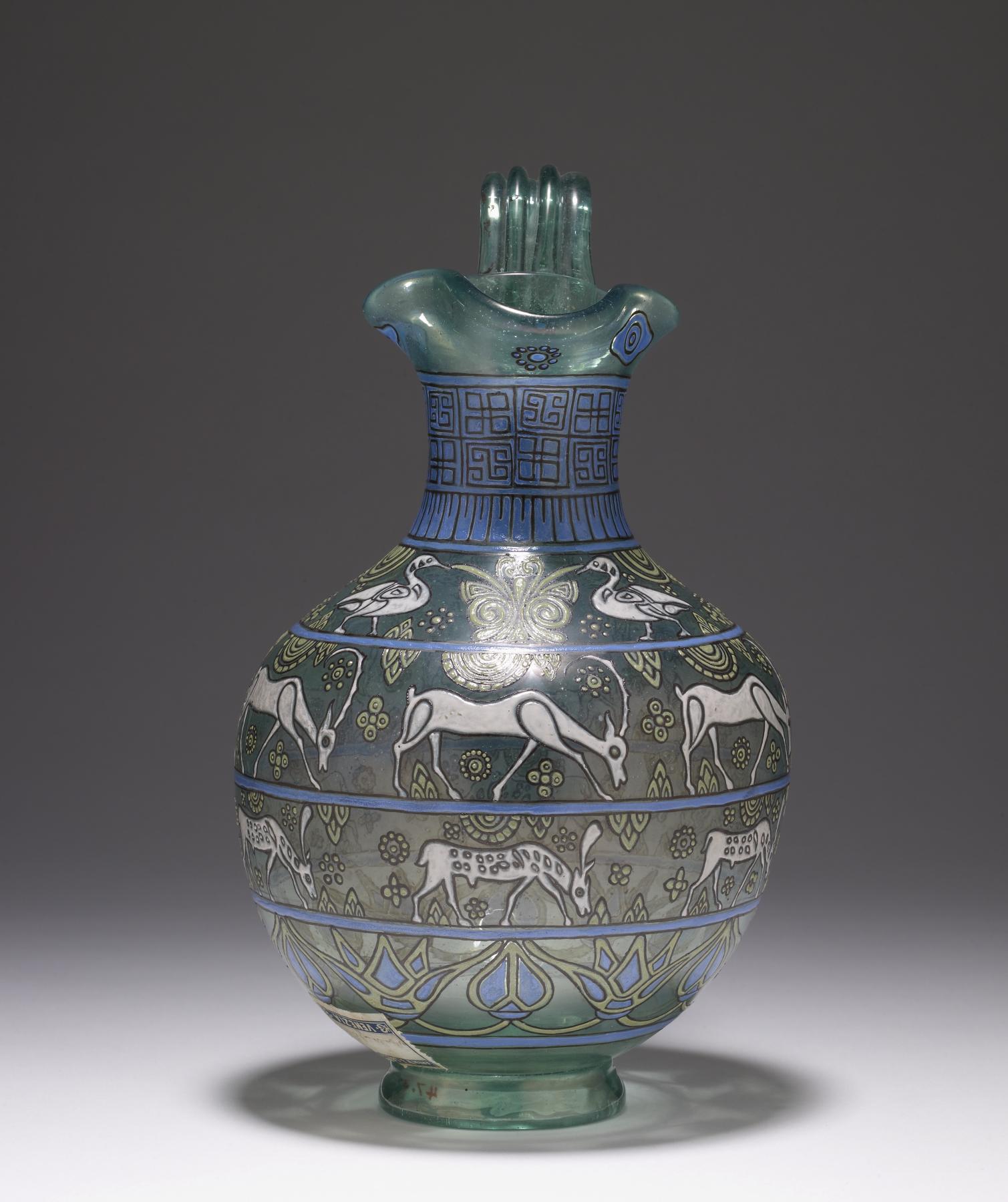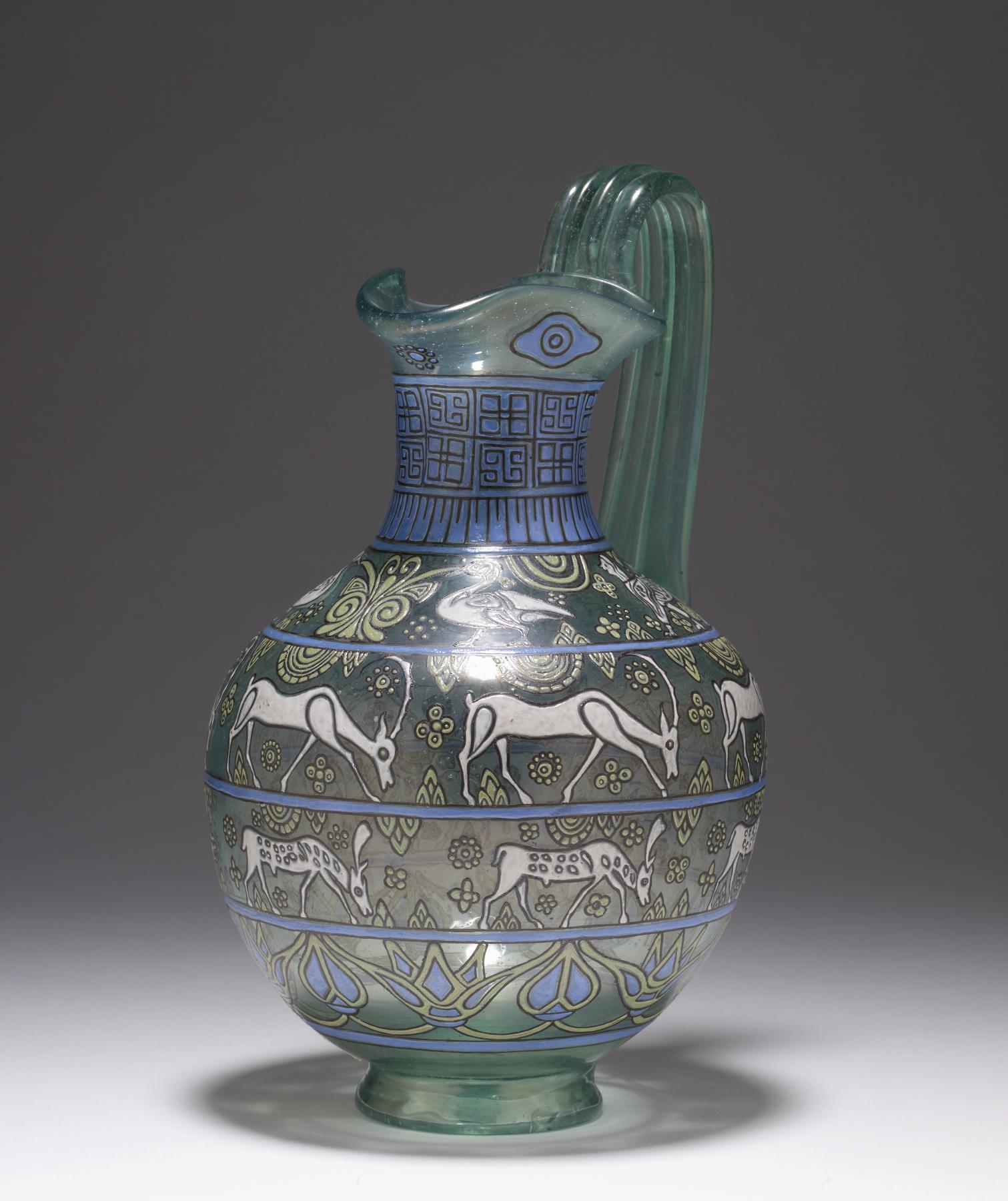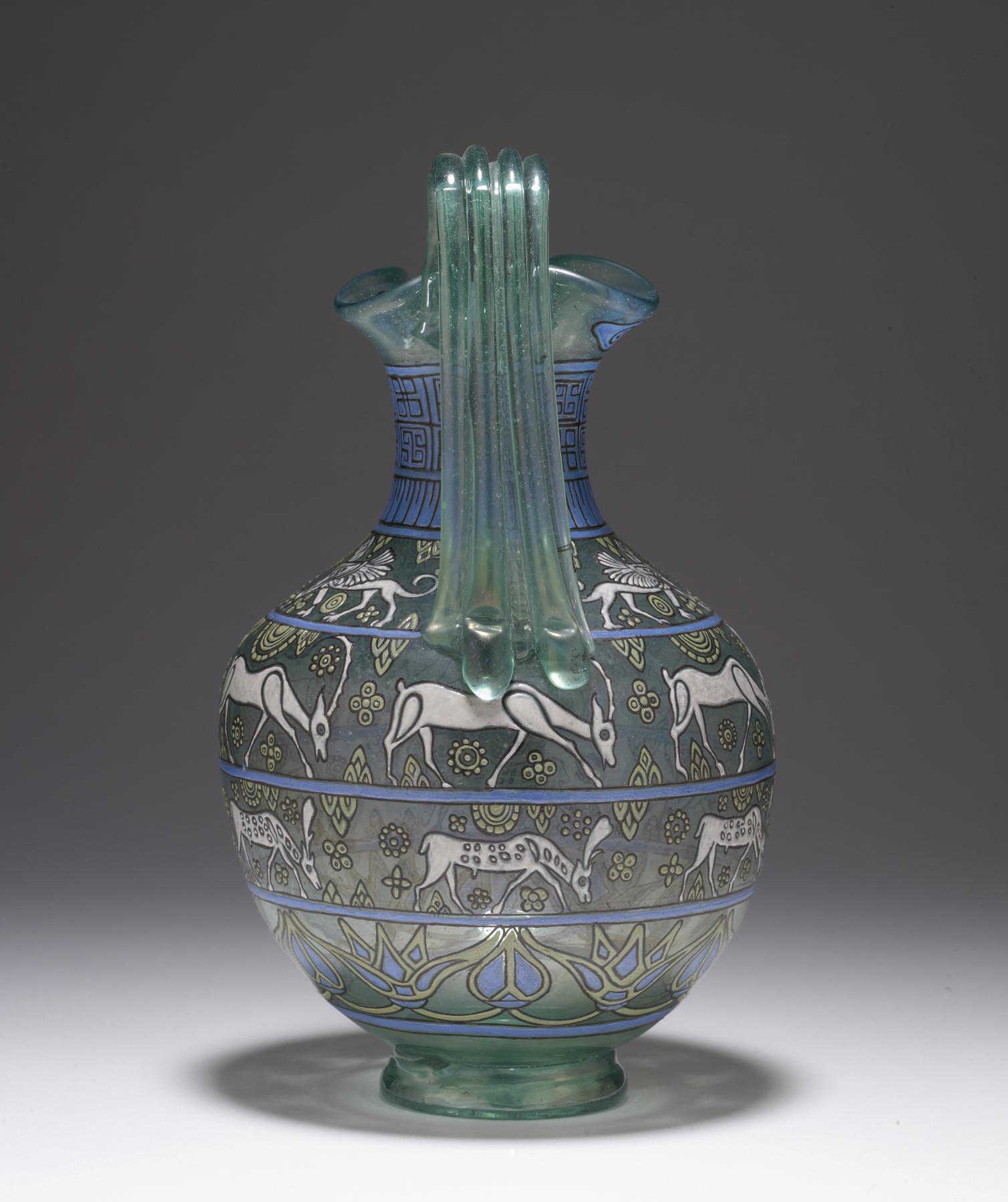Pitcher
(18th and 19th Centuries )
The Salviati glassmakers were inspired by objects other than those made of glass. Evidence of this influence can be seen by looking at a Greek "oinochoe," or wine jug, and this Salviati glass pitcher. The pitcher shares the classic "oinochoe" shape, and a motif composed of friezes of goats. The pitcher's shape and thickness are more reminiscent of a ceramic vessel than of ancient or earlier Venetian glass forms. The label on the base of the pitcher reads "Museo Egitto," indicating that the glassmakers at Erede Dr. A. Salviati & Co. (translated as the Heirs of Dr. Antonio Salviati & Co.) likely copied it from a vessel in an Egyptian museum in Italy. The pitcher was blown and then painted with enamel.
Provenance
Provenance (from the French provenir, 'to come from/forth') is the chronology of the ownership, custody, or location of a historical object. Learn more about provenance at the Walters.
Purchased by Henry Walters, Venice, 1911; by bequest to Walters Art Museum, 1931.
Exhibitions
| 2007-2008 | Salviati and the Antique: Ancient Inspiration for Modern Glassmaking. The Walters Art Museum, Baltimore. |
Geographies
Italy, Venice (Place of Origin)
Measurements
H: 9 3/4 × Diam: 5 9/16 in. (24.8 × 14.2 cm)
Credit Line
Acquired by Henry Walters, 1911
Location in Museum
Not on view
Accession Number
In libraries, galleries, museums, and archives, an accession number is a unique identifier assigned to each object in the collection.
In libraries, galleries, museums, and archives, an accession number is a unique identifier assigned to each object in the collection.
47.345








